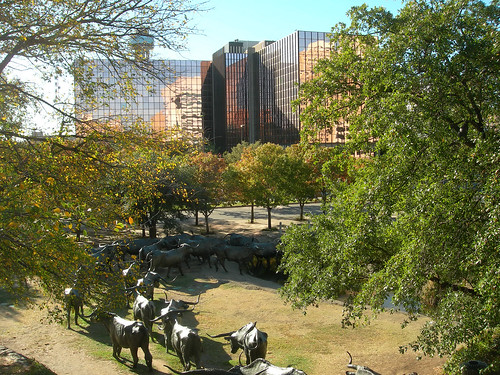
My visit to the Dallas-Fort Worth Metroplex began on November 5, 2008 about 15 hours after Barack Obama had been declared President-Elect and Texas had been affirmed as the only Electoral College-rich state in which the winds of change had not blown. I had wondered on the airplane down if Texans would have strange looks of fear in their eyes or be talking endlessly about how the “liberal media” got Obama elected. However, in the six days I spent in Texas I only ever heard a handful of people mention the election and most opinions were of shrugging the shoulders-type indifference. Still, I had a minor chuckle when I landed at DFW (the world’s third busiest by aircraft movements) and was greeted to the Lone Star State by the airport’s address system inviting travellers to “…day after election prayers in the airport’s chapel.” I wondered if I would have heard this address had the returns been different? Were certain travellers who found themselves connecting in DFW running to the chapel to pray a little harder during their layovers? While it can be easy to make generalizations about this part of the world, it is sometimes hard not to when greeted in such a way.
DFW is located right in the middle of the Dallas-Forth Worth region, which is commonly referred to as the “Metroplex.” It is the largest metropolitan area in Texas and the fourth largest in the United States with a combined population of 6.3 million and is actually larger in area than Connecticut and Rhode Island combined. The Metroplex is home to many distinctions that are not commonly known until one researches the place. For instance, there are more head-offices in the Dallas-Fort Worth Metroplex than anywhere else in the United States, including New York City. There is also more per capita retail in the Metroplex than almost anywhere else on earth. These distinctions could easily leave one thinking that they are entering a top-tier alpha city of world-class shopping and global business acumen. Yet, Dallas, and by extension the Metroplex, do not reveal itself as such a place. Not to downplay these distinctions, but to genuinely wonder how a region this successful also manages to mostly fail at creating the urban context and excitement that many other regions of similar (or much lesser) distinctions so easily make.
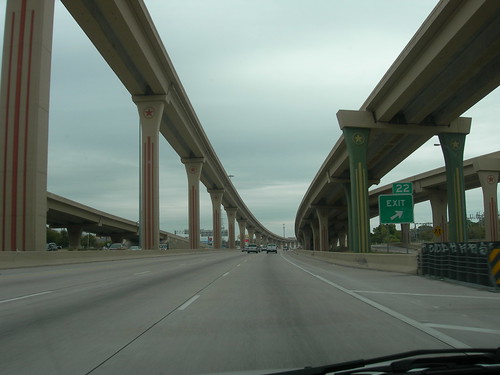
The drive from DFW to downtown Dallas is a familiar one for most North Americans. You pick up your rental car at the airport’s “Rental Car Center” (yes, they have a whole terminal for rental cars) and hit the highway toward the gleaming towers of Dallas’ CBD. Along the way is a typical assortment of grand highway interchanges, power centres and a mostly brown, featureless and flat landscape that allows for all the Metroplex’s sub-centres to peak into the horizon in a very GTA-like way. Also like Greater Toronto, the footprint of the Metroplex is massive and seems to regain steam every time you think it may be about to putter-out. Cities such as Arlington, Irving, Plano and Richardson add to what is already a widely developed and polynucleated parcel of north Texas. So there is definitely a familiarity in the view, but also subtle differences as the highways are a little bigger, the shopping a little more ubiquitous and the development (even in the downtowns of these sub-centres) more ardently single-use. Still, this is suburban Dallas that I’m hurtling through and it is those approaching towers of downtown Dallas that are making me want to truly explore the heart of this rambling region.

Downtown Dallas
Downtown Dallas is located in the geographic centre of the city and is bounded by a freeway loop that surrounds, but does not quite pierce it. It is also a lot of things that downtown Toronto is not, particularly quiet. So quiet in fact that it is hard to believe you are standing in the middle of one of the larger CBDs in the USA. Apparently over 130,000 people work in the impressive assortment of office towers, but you would be hard pressed to find even a thousand of them on the streets. Curiously, there is no extensive +15 system nor is there any sort of concourse-type P.A.T.H. system diverting people away from the sidewalks. It simply appears that most people that work in the downtown do not do anything else besides “work in the downtown.” Sort of a vertical office park where any hustling and bustling is done high up in boardrooms and not down on the street.
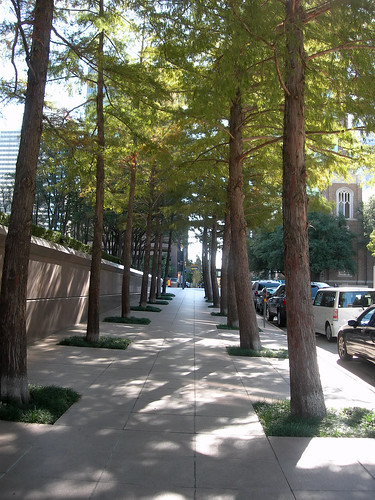
While the city has been encouraging residential development downtown, there is little sign of it in the core, although there is some on the periphery. Downtown also boasts a fair number of hotels, but precious little retail with the exception of the very first Nieman Marcus store. All other retail in downtown Dallas tends to be coffee shops and restaurants catering to the 9-5 and/or tourist crowds. In fact, I took note that many of these establishments did not even stay open for the evening rush hour, but instead closed at 3:00 pm daily. The pin-drop quietness of the downtown was really quite a mystery considering the city is graced with a fair number of handsome buildings, decent and wide sidewalks, a commitment to public art, clean streets, some good parks and a general feeling of being safe.

Some parts of downtown Dallas even reminded me of New York, except for the total and complete lack of people.
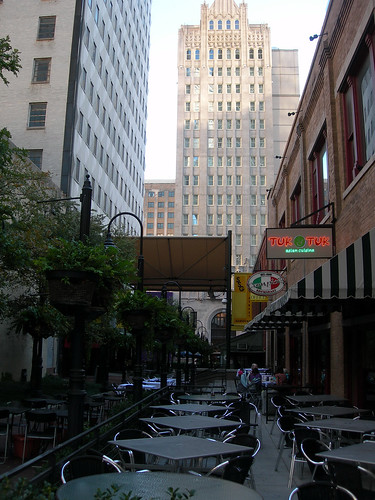
Union Station
Dallas’ Union Station, like Toronto’s, is the hub of their transit system. It offers DART (light rail), AMTRAK (intercity) and Trinity Railway Express (commuter rail to Fort Worth) services. Constructed in 1916 as Dallas Union Terminal, it was built with the intent of making Dallas a premiere transportation centre of the southwest. While Dallas’ post-war growth patterns prevented it from being the terminal it was meant to be, it remains a fairly attractive and workable building for the current transit needs of the city.

The front lawn of Union Station is not nearly as busy as some of the continent’s other great “Union Stations.”
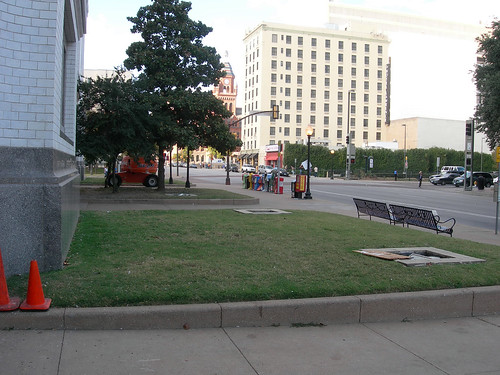
Inside Union Station is honestly quite depressing…and super empty. This was captured on a Wednesday afternoon!
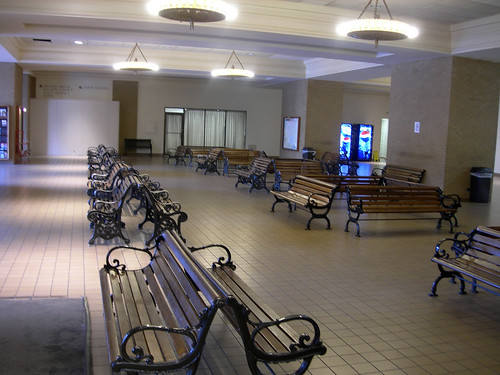
Dealey Plaza
Dealey Plaza sits on the north-west edge of Downtown Dallas and looks much like it did in the notorious Zapruder film. Walking through the plaza gave me the sense that I had been there before even prior to checking my GPS to see if I was indeed in the infamous plaza. There has been very little development in this parcel of downtown and it basically sits as a living museum to November 22, 1963.
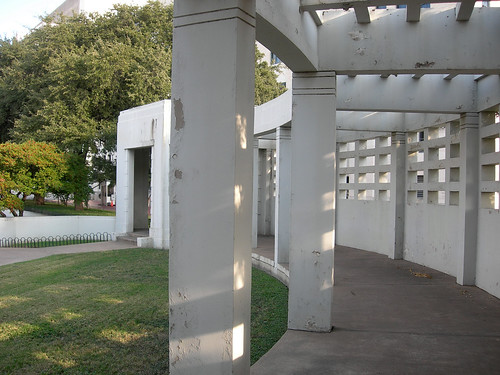
The Texas School Book Depository (now the Dallas County Administration Building) is where it is believed that Lee Harvey Oswald shot John F. Kennedy from a 6th floor window. It now also houses the excellent Sixth Floor Museum (dedicated to the life of J.F.K., his assassination and the aftermath).
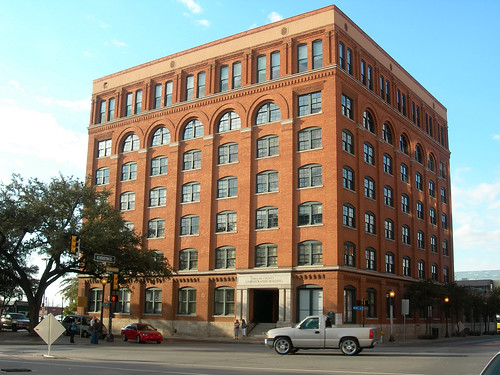
Elm Street runs through Dealey Plaza and is one of the downtown’s major arteries taking vehicles in and out of the CBD to and from the freeways. An “X” marks the spot where Kennedy was fatally shot on Elm Street. Ironically, many tourists dodge traffic and risk their own lives getting their picture taken next to the “X” where Kennedy lost his.
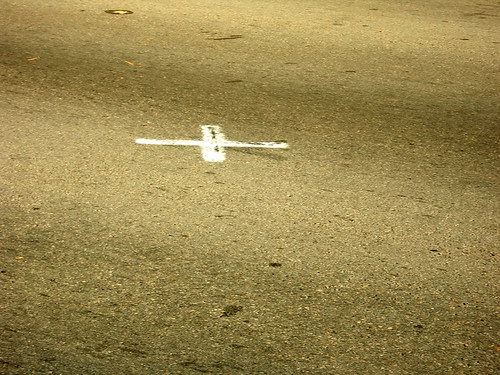
One could call Dallas an unfortunate victim of one man’s (or possibly more?) craziness a generation ago, but unfortunately for Dallas its political climate during the early 1960s did not help it recover quickly in the minds of many after the tragedy. Dallas had always been a fairly conservative town and was suspicious at best, horrified at worst, by the themes of Kennedy’s Administration, particularly on Civil Rights. To put it bluntly, if Kennedy were to be assassinated, some would have easily picked Dallas as the city for it to happen and it therefore left it with a sense of blame that took many years to overcome. This guilt, and subsequent reinvention, is central to understanding the modern Dallas though.
Arts District
Part of Dallas’ generation-long reinvention would be a commitment to public arts, perhaps best exemplified in their Arts District.
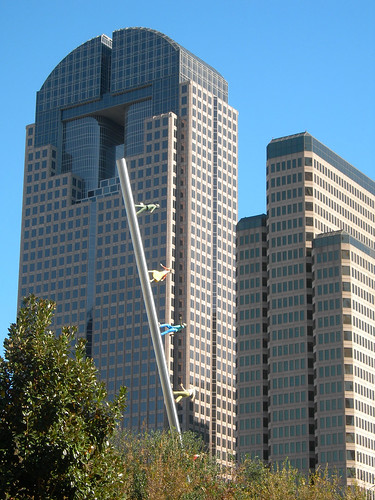
The Dallas Arts District takes up a large portion of the northern part of the CBD and is home to the majority of the city’s major performing arts and cultural venues. Despite the city’s real, or imagined, “cowboy motif” Dallas takes the arts very serious and has built an impressive number of facilities in what is basically a created precinct. I use the term “created” as that is what this is; a single-use zone of cultural facilities with no immediate neighbourhood incubating the district. Not to say that Dallas does not have artistic communities further out, just that the Arts District itself feels more like a construct for tourists to easily see all the institutions in an afternoon, than any sort of true artistic neighbourhood that reveals itself more over time.
The Dallas Museum of Art sits in the middle of the Arts District, and is surrounded by other cultural attractions, including the Nasher Sculpture Center, the Morton H. Meyerson Symphony Center, The Trammell & Margaret Crow Collection of Asian Art, The Dallas Center for Contemporary Art and the under-construction Dallas Center for the Performing Arts.
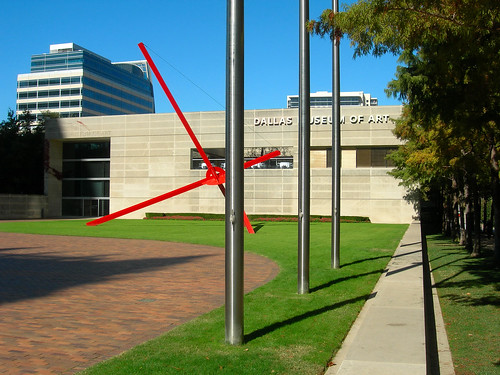
While one can only applaud Dallas for bringing such a wide-array of culture to north Texas, the Arts District unfortunately does not pass the test of an urbanist very well. While the individual galleries, museums and performance spaces may be great, one is still left with a sense of never having found the Dallas arts scene.
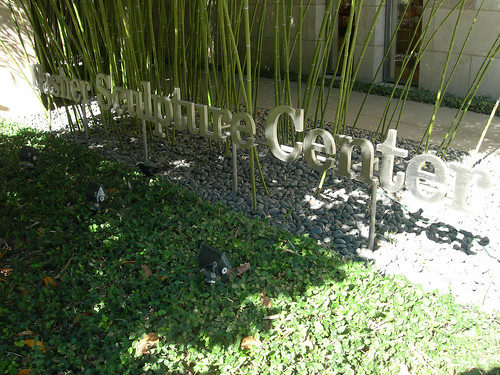
West-End Historic District
From the Arts District I headed west to what the tourist maps call the West End Historic District. Just to make sure I was heading in the right direction, I asked in a local Starbuck’s only to have all the employees shrug at me and say they had never heard of such a place. Regardless, I trusted my senses and continued five minutes down the street to find it.

This district is pretty much the only area downtown that has any significant residential usage. It includes a variety of old warehouse buildings (and some newer brick buildings) that have been adapted for restaurants, shops and living quarters. Sadly, the area seems to be in a bit of a decline despite the heritage preservation and the more classically urban streets. Even though there are clearly people who live in this neighbourhood, all the businesses are mostly higher-end “surf and turf”-type restaurants that cater more to whatever convention is in town than in providing the locals with somewhere to easily buy their essentials.
The West End Marketplace was an opportunity for local vendors to sell their wares, but unfortunately closed its doors in 2006 and now sits empty, although I got a kick out of the never-changed early 1990s font. While there is probably an opportunity for Dallas to re-imagine this space as some sort of Distillery District-type neighbourhood, I never got the sense that rejuvenation was on the radar.
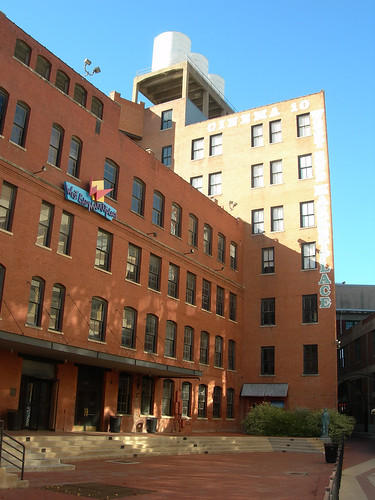
Municipal Plaza
Dallas City Hall was designed by noted architect I.M. Pei and features an angular inverted pyramid design that makes it one of the city’s more iconic buildings. It sits in the middle of a concrete municipal plaza which in many ways has a Nathan Phillips Square feel to it. This is not really surprising if one considers the years in which Dallas “came of age” were only perhaps a decade after Toronto’s.
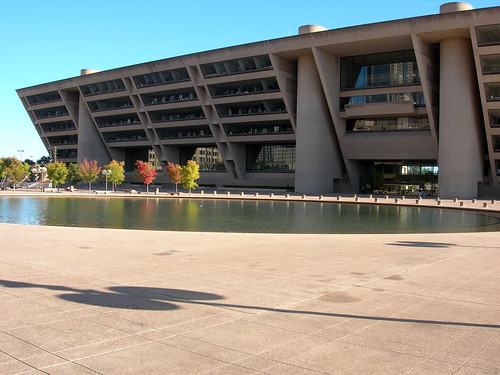
Surprisingly, or perhaps not so, the Dallas Municipal Plaza also graces a Henry Moore sculpture that is simply titled “The Dallas Piece.” It was fenced off for no apparent reason which was particularly odd as the square was completely empty every time I walked by. It seemed like the type of piece that children would want to climb (similar to the AGO’s “Two Large Forms”) and that perhaps it had been fenced off for fear of litigation?

Uptown
A quick walk (or historic streetcar ride) over the Woodall Rogers Freeway begins a part of Dallas stuck between downtown and suburbia that is arguably more urban than the downtown itself. Not that “Uptown” is perfect by any means, but it does give one a glimpse of what might be possible in sunbelt cities when a bit of creativity, effort and planning, are used to improve the public realm, if even slightly.
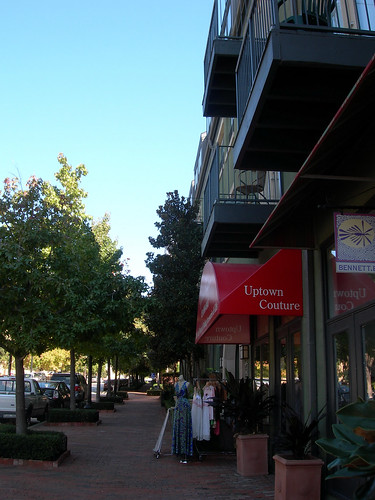
Uptown immediately feels like a neighbourhood. It may be trendy and catering, in general, to more moneyed Dallasites, but it mostly works in the sense that you can walk around, see other people, peruse local retail and do some of those things you would simply expect to be able to do in a region of this size and importance. It is also home to the city’s gay village, many of the city’s bars and clubs and the majority of recent condo construction. A comparable GTA neighbourhood might be the urban-suburban hybridness of Port Credit.
Dallas’ condos do not seem to have any local vernacular and instead borrow heavily from historicist styles. For example, I was very bemused by this McKinney Avenue condo’s French chateau motif…
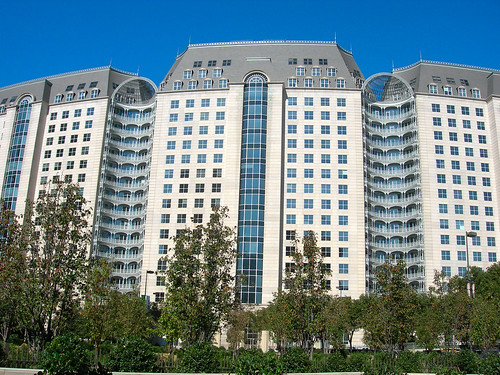
In the middle of Uptown sits the West Village which is a residential and retail “new-urbanism” development built in 2001 and works as well as one could hope when building a neighbourhood from scratch. The architecture may be gimmicky, with each block done in a different historical style, but indeed this is one part of Dallas with a noticeable sense of place, but still relatively friendly to the automobile. Perhaps this form of new-urbanism is the best that can be hoped for sunbelt cities?
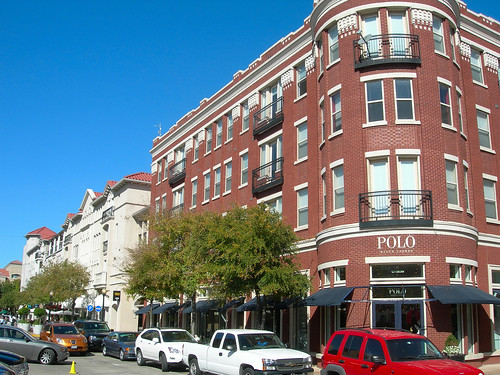
DART
Transit and transit-oriented developments are mostly afterthoughts in Dallas, but DART does seem to represent the start of changing that. In particular, the almost 80 kilometres of LRT makes DART one of the larger light rail operators on the continent. Moreover, openings of the Green and Orange Lines by 2013 will almost double DART’s light rail coverage to 145 kilometres.
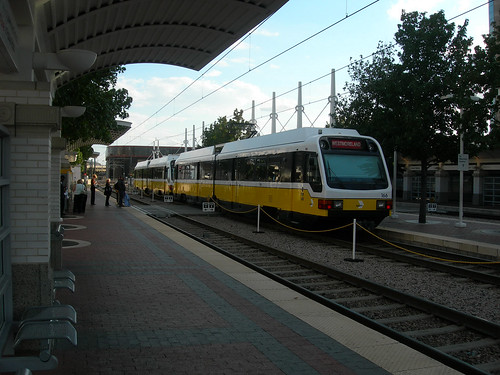
While it may take a generation to get the average Dallasite excited by the idea of transit everywhere, DART should at least be admired for connecting some obvious dots on the map (Union Station, Uptown, Fair Park, Plano, Richardson, Medical Center, etc.) Light rail also seems perfectly suited to a city of this size and character. I also found it safe, easy-to-use and logical. The headways may be far greater than we are used to in Toronto (especially on the bus services), but in a post-war city in this part of the world it could probably be a lot worse.
Considering that most of Dallas’ LRT lines run on former rail corridors and/or on elevated viaducts it does not allow for a good comparison to the TTC’s coming Transit City. In fact, the only place where DART operates on local roads is in the downtown, however it is exclusively done by creating full mode-separated right-of-ways and transit malls (something that the City of Toronto will not consider on our legacy streetcar lines). Perhaps though, the TTC could look at the stop-spacing on DART’s LRT lines as one area that Dallas seems to have got right.
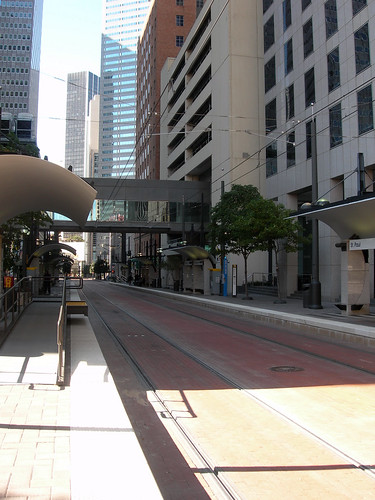
Fair Park
About a ten minute drive south-east of downtown sits Fair Park. This Exhibition Place-like complex is a registered National Historic Landmark and was originally constructed to house the Texas Centennial Exposition in 1936, but is now best known as the home of the State Fair of Texas which is America’s largest. The park boasts a significant number of art deco structures and is home to the famed Cotton Bowl Stadium, which beginning next year will no longer be hosting the Cotton Bowl when it moves to the new Dallas Cowboys Stadium under construction in suburban Arlington, TX.
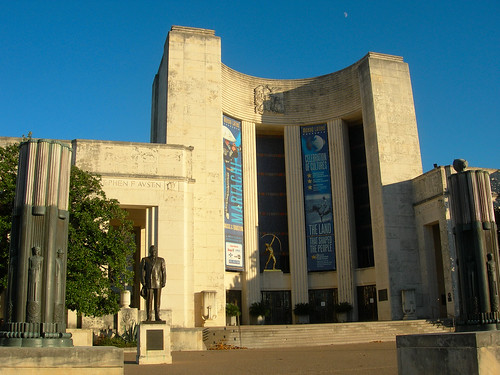
Fair Park is also home to many of Dallas’ boutique museums, including The Museum of the American Railroad.
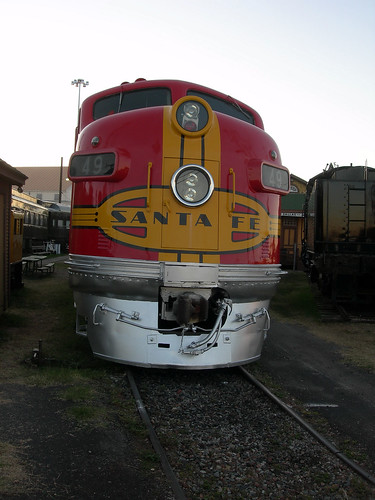
Walking through Fair Park on a quiet November afternoon does not necessarily give one an accurate impression of what this space is transformed into for a few key weeks each year, but it does let one into the psyche of Dallas just a bit. Sayings such as “everything is bigger in Texas” and “The Big D” actually have their beginnings on these grounds in reference to Dallas’ grandiose, and perhaps over-built, staging of the Centennial Exposition. It could probably be argued that if Expo 67 were Canada’s “coming out party,” than the 1936 Texas Centennial Exposition was Texas’ as it still resonates in the state’s way-of-life. Fair Park’s depression-era, but optimistic legacy carries to this day as a starting point of the modern Texas character. It exudes confidence, individualism and flair.

Fort Worth
While in Dallas it can be easy to forget that the Metroplex offers another large city just a 45-minute jaunt down the I-30. While I only spent a day in Fort Worth it certainly merits the drive (or TRE train ride), if not only to appreciate the girth of this massive region, but also to discover another city that is very different than Dallas, but interesting in its own right. It is often said that “Dallas is where the east ends and Forth Worth is where the west begins” and that expression seemed apt to describe my experience.

Perhaps even more surprising than the fact that Dallas takes its arts seriously, is the fact that Fort Worth, arguably, takes them more so. America’s “Cowtown” is home to a number of outstanding museums including the Kimbell, Modern and Amon Carter which are required “architourism” even for those that may not be particularly interested in their collections. Unfortunately, Fort Worth’s “Cultural District” is located about five kilometres west of downtown on the sprawling, but attractive grounds of the University of North Texas.
Many consider The Kimbell Art Museum to be one of Louis Khan’s greatest buildings…

A short drive north of downtown is the most famous part of Fort Worth – The Stock Yards National Historic District. While much of it is geared toward the tourist set it does exude a sort of mythical American West quality that no number of tourists are able to change. There is also a quiet confidence about Forth Worth, especially in this district, that is perhaps missing in the showmanship of Dallas. While the district itself has good urban bones, it sadly ends quite quickly if one meanders a few minutes in any which direction.
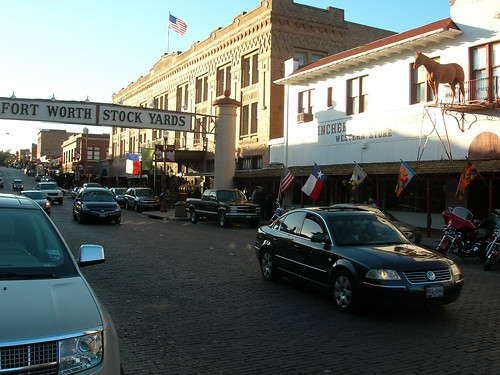
The Stock Yards is also home to Billy Bob’s Texas – The World’s Biggest Honky Tonk which is a giant playground of Country & Western music stages, dance floors, billiard tables, arcade games and even a small rodeo. While it too may be geared toward tourists I really must admit to feeling quite removed from Dallas, and the entire east coast, while enjoying a few beers here. In a sense, it was the Texas that all of us have somewhere in our minds.

Dallas vs. “Dallas”
Much like President Kennedy’s assassination, Dallas had a second shooting it could not have planned or predicted. This one involved the shooting of the fictional “J.R. Ewing” and the subsequent rise of Dallas as a generation-defining show of enormous global popularity. To this day, Dallas holds the record for being translated and dubbed into more languages than any other show and has aired in over 90 countries. The show’s popular season-ending cliff-hangers are still some of the most popular episodes in television history and set in people’s minds a version of Dallas that is different than the reality.
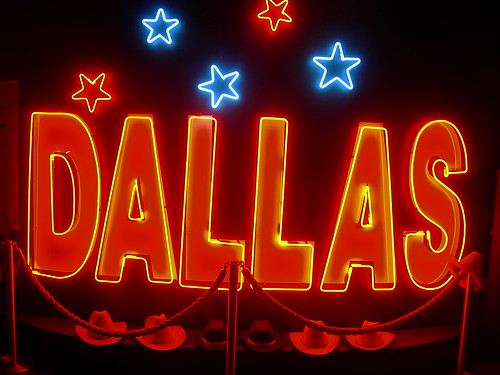
Southfork Ranch, the home of the fictional Ewing family, is about a 40 minute drive north of downtown Dallas in Parker, TX. To this day, it is one of the state’s largest tourist attractions and features mansion tours, shopping, the Miss Ellie Deli, the Dallas Legends Museum and a variety of conference and banquet facilities. Mail addressed to “Sue Ellen,” “J.R.,” “Bobby” and “Pam” still arrives daily from far corners of the world. While the producers set the ranch somewhere in exurban Dallas, it is now situated within Dallas’ suburbs as the region has sprawled. Most reactions to seeing the ranch house in person involve comments about “how small it is” compared to “how they made it look on television.” Which perhaps works well as a metaphor for how the TV Dallas made the real Dallas look.
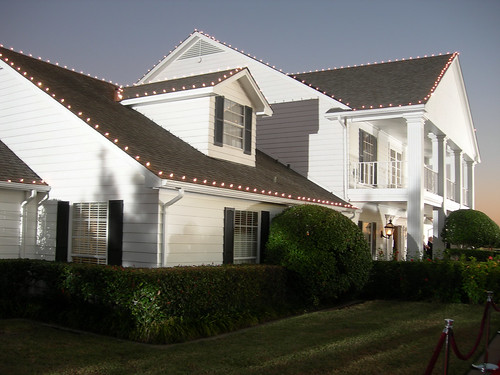
Dallas is fairly unique in being a city that had itself defined by a TV show whether it wanted to be or not. The show may have featured two rich families feuding over love and power, but it also showcased a city of bustling and busy streets where people had power lunches in outdoor office plazas, shopped at big downtown department stores, lived high-up in ritzy downtown condos and drank bourbon & branches in sky-high bars atop gleaming skyscrapers. In a sense, the show made Dallas look like a New York City of the 1980s even though the reality of the place probably has more in common with a city like Calgary.

While Dallas’ view of Dallas may not exactly be truthful it did help to reposition the city in the minds of not only its citizens, but of the global community. It represents when people started to not automatically equate the city with JFK’s assassination and also when a cheeky sort of confidence started rising as the sunbelt’s population concurrently grew. While most fans of the show will never likely go to Dallas, it is interesting that the city exists in their minds in ways quite different from reality. Still, it’s hard not to be a bit disappointed, even by a soap opera, upon the realization that even the urbanity of Dallas was as imagined as Bobby Ewing’s death.
Dallas Round-Up
In a period of financial collapse and moribund global economies, which some blame on the unsustainable rise of the sunbelt, Dallas is at a curious point in its history. It has had the distinction of being part of the fastest growing region in the United States for many of the past 20 years and could easily lead one to wonder how such a sprawly place of far flung suburbs, sub-prime mortgages and over-developed retail will weather as the recession deepens. It would also be fair to inquire if it has perhaps reached its peak and has begun a slow, but steady, decline as people’s priorities change and adapt to new realities and different ways of living.
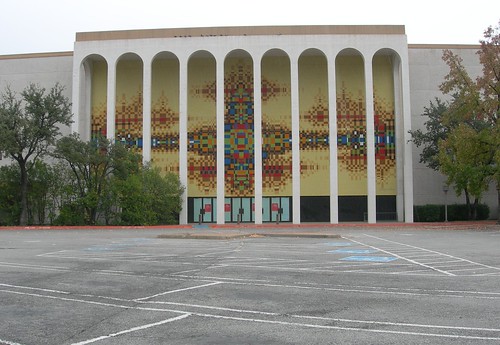
In fairness though, Dallas has also shown resiliency in the past and likely will again. It has also made some baby steps in the right direction with regard to public transport and urban design that could, and likely will, be intensified as we enter a new era of public infrastructure spending.
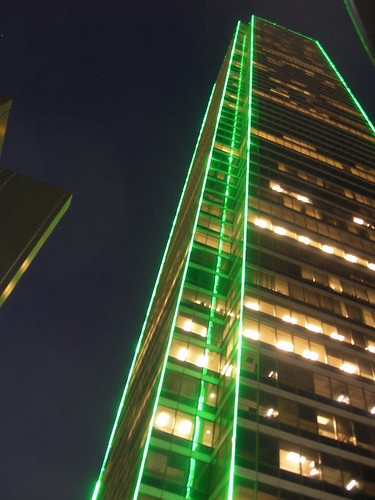
Regardless of whether Dallas, and its surrounding Metroplex, is “your type” of city it should be viewed as a near perfect example of how we built the post-war modern city in North America. No, it is not a urbanist’s paradise, but it does perfectly match the dominant North American culture in those same years. Yes, a sprawly and suburban place where everyone’s middle-class desire to have a home is met, but also one containing hints of urbanity, culture and where some recent developments show a new paradigm slowly revealing itself.
In a way, meandering through the Dallas-Fort Worth Metroplex is a journey through the hopes, imagination and failures of a generation of Americans.
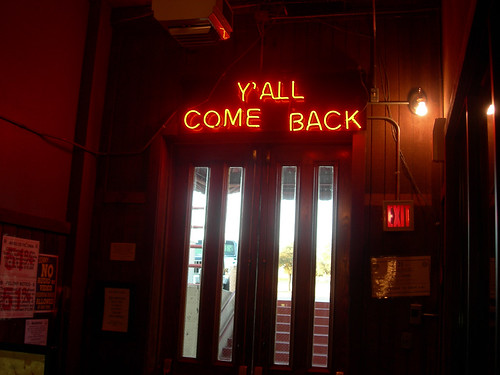

27 comments
Thanks for the very interesting article. DFW is clearly a region of contrasts.
Wow! This is the best Spacing article in months! I think you’ve very perfectly captured the essence of the sprawling DFW metroplex in just a few short days and just a few short paragraphs.
Sunbelt cities are frustrating for urbanists, but they’re also very promising places. They’re starting from practically nothing, but there are some people who are trying very hard to make these cities progressive, urban places and, much more so than an established East Coast city with hangups (or Toronto, for that matter), the authorities in Sunbelt cities are willing to listen.
Wow, amazing work Jason. I really hope you have a chance to do more of these. This, and your report on Atlanta, are some of the most interesting stuff I’ve read in a long time.
Great article. I really enjoyed reading your impressions of DFW.
Excellent report Jason. Great pictures and info. We will consider Dallas as a future travel destination.
Excellent piece.
x2, this is the best Spacing article I’ve read in months.
I’ve always felt your urbanist-tinged reviews of other cities are fantastic. I think it must be difficult to research and develop a coherent narrative of what a city is like and why. I can also appreciate that as a 416er it must be a bugger to get around and document these cities without the aid of a car.
Those LRT ROWs are sweet, but desolate.
I’m extra proud to be a Torontonian today.
Lovely article, of a city that I will likely never visit. Thanks Jason!
The beginnings of this article had me remembering the Calgary I grew up in. Then you go and make the comparison yourself. Heh.
Fantastic writing, Jason. When you said “Perhaps though, the TTC could look at the stop-spacing on DART’s LRT lines as one area that Dallas seems to have got right.” What exactly did you mean? I figured you were thinking “further apart”, but was there anything else to it?
Wonderful piece. I followed the link from the Spacing Facebook note. The photo’s clearly illustrate your observations. I was especially intrigued by the ghostly downtown and wonder – just where people are spending their time in Dallas and why it appears to have so little street life – or even poor folks in the urban core?
The idea of a city feeling collective guilt — or being weighed down by guilt — of a presidential assassination is incredibly fascinating. Growing up during the run of Dallas, the TV show dominated thoughts of that city (as did, perhaps, the Dallas Cowboys as “America’s Team”). It wasn’t until I saw Robert Altman’s 1975 film Nashville, did the notion of Dallas being so connected to the assassination become clear (also simply one of the greatest films ever).
SPOILER>
At the end of the film when an assassin’s bullet meant for a presidential nominee hits a country singer, on stage, one of the main characters grabs the mic and tries to calm the crowd by saying “This isn’t Dallas, this is Nashville”. Wow.
Can’t find a clip of the moment, but this one starts a second to two after Haven Hamilton (the man in white) says the line:
http://www.youtube.com/watch?v=4BYyDusJYJo&feature=related
Great post. The pictures are spooky for the missing people. Many of the shots made me think of the planet Miranda in “Serenity”, or that shot of Cillian Murphy crossing the empty Thames bridge at the start of “28 Days Later”.
Great post. I had the pleasure of visiting the DFW “metroplex” a while back and also was surprised by the emptiness in downtown Dallas. Although when driving by Texas Stadium after the Cowboys game was over, you could just imagine the potential if things weren’t so sprawling.
An excellent essay – lots of fascinating observations. Your writing and photography is evocative for a person who has never been to Dallas (well, I’ve had layovers in the airport). Looking forward to your musings on other cities.
This reminds me of my trip to Buffalo years back. A lovely sunny Saturday afternoon and the streets were barren. I think I could actually count how many people were there on my hand. It was ghost-townish. No one living downtown.
Typical Torontonian smuggery.
Gimicky urbanism and faux-historicist architecture are just as prevalent in the 416 as they are in the sunbelt. I’ve been to DFW and it’s a lot more beautiful than Toronto is.
Thank you for an excellent article. My sister is moving to Dallas soon, and I’m still a bit confured about what she sees in the place. It’s nice to know a little more about a place, especially one that seems so easy to pre-judge.
My Brother has lived in the DFW area for ten years, and I spent at least two vacations a year there with him growing up.
There’s a massive privately built mish-mash underground tunnel system in the downtown core that the city is reluctant to publicize. They’re hoping to encourage growth topside, which means they want the pedestrians to avoid the sprawling underground walkways and retail. But it’s why you didn’t see anyone downtown, suburbanites hop the freeway into the city, park underground and stay indoors from 9 to 5. You wouldn’t know about it unless you had a guide. Dallas is a driving culture and a hot city – no one leaves the A/C, whether it’s their SUV, home or office building, unless they’re forced to.
DFW is a city of neighbourhoods like TO, you just have to drive to get to them. The real life is in places like Lower Greenville to the east, where miles of restaurants, retail and bars blast cool mist from big fans across patios up and down the street, which I imagine is what a Queen St W would look like in perpetual heat. And the condos and spanish-influence or ranch-style houses that sprawl out from these centres show the real heart of the Dallas community.
Thanks for the article!
@James: Yes! Typical Torontonian smugness recognized despite typical Torontonian effort to disguise smugness with veneer of fairness and objectivity. Although you are 100% wrong about DFW being “more beautiful” than Toronto, James, you are 100% right to notice that a Torontonian thinks Dallas sucks.
Loved the article. Great stuff.
The Dallas area has seen housing development on a scale that makes the sprawling 905 look tiny. This more than anything has led to downtown Dallas being a place for business and little else — why bother to live downtown when you can soak in that Texas sky with a huge house in Plano for peanuts? Traffic congestion, less disposable income, a skeletal rail system and high housing costs have done more to maintain Toronto’s core urbanity than any high-minded thinking or mixed-use land pattern. Think about that for a moment.
I suspect that Dallas will see some massive change though now that the housing market has knocked the wind out of suburban growth for now (see http://www.nytimes.com/2008/02/20/us/20exurb.html?scp=3&sq=housing%20texas%20plano&st=cse) and because of DART. No one lays 145 km of track without seeing some real change in urban development patterns. (By the way, a DART fare costs $1.50 per ride, or $3 a day, or $50 a month.)
Reading this article, I felt as if I could have replaced Dallas with Edmonton or Calgary. Two canadian examples of bad thought urbanism with HUGE suburbs and practically no city center living…
Nice article.
Whenever thinking about Dallas, in my head it was always as the retro-futuristic brutalist playground that was used for the backdrop of Logan’s Run (http://en.wikipedia.org/wiki/Logan%27s_Run_(film)).
Perceptive and balanced article, another winner in a great series. I was struck by the photo of a beautiful tree-lined Dallas sidewalk early in the piece. What is it about Toronto that we simply can’t create and maintain any pleasing, generous sidewalks? Even a car-dominated sunbelt city managed at least one.
The underground tunnels in downtown Dallas connect the highrises and some of the hotels. There are restaurants and other retail, plus bank branches, doctor’s offices, hair salons, drug stores, shoe repair places, etc, all in the tunnels. That’s where a lot of the people are. They tunnels close at 7pm.
Not everything is connected, so you will see folks on the street. Just follow them and see what door they go in and chances are they are headed to a tunnel, although you think they are entering a parking garage.
First off, thanks for all the kind words and sorry for taking months to respond!
Dilla, yes I was referring to stop-spacing and a belief that Toronto’s stops are generally too close.
James, never did I suggest Toronto didn’t have faux-historicist or gimicky architecture. However, Toronto, in the core at least, has a building stock that is more reflective of whatever time it was built (at least in my opinion). I’m disappointed that you would read my piece as an attempt at Toronto smuggery.
Riley & Dallasite, I had no idea that there was a a massive privately-built, little-publicized, underground tunnel system, but that does explain a lot.
Pman, very true about Toronto’s sidewalks. You’ll also notice no power lines in downtown Dallas either. Toronto can learn a few things, yes, even from downtown Dallas.
Your post humbles future civic leaders and urban planners. The photos present the paradox of planning – one can build beautiful locales yet the citizens will still stay away.
I’ve been to cities where the streets were paved with garbage – with smells so stank it would turn your hair grey – and yet the urban life, on the sidewalks, in cafés, was incredible. I wonder what is the missing ingredient in Dallas’ urban formula?